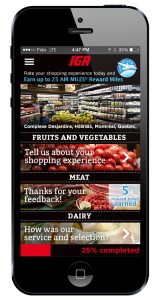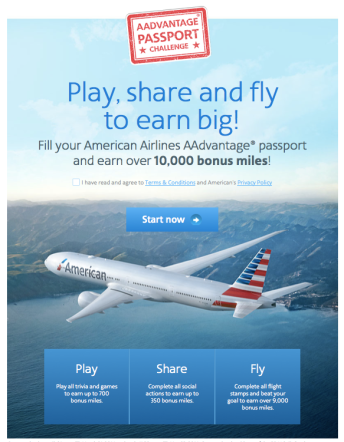Previously, we defined gamification and reviewed examples across a range of sectors – from fitness to scientific research. Now let’s get to the heart of the matter and talk about potential applications for the loyalty industry.
But first, let’s get a couple of obvious points out of the way. In evolutionary terms, it could be said that gamification is of the same ‘genus’ as loyalty programs. They’re distant cousins of one another and when applied to consumer marketing both largely serve to drive brand engagement, repeat purchasing, increased basket-size, and – well – loyalty. So, it’s no surprise that gamification providers refer to their “behaviour platforms” and loyalty providers claim that their programs “profitability change consumer behaviour”

Okay, with these obvious similarities on the table, let’s look at where gamification parted ways with loyalty programs along the course of their evolution.
Anyone who has ever been a frequent flyer, a frequent hotel guest, or a frequent shopper (at grocery stores, pharmacies, coffee shops, etc.) will know the basic elements of a loyalty program:
- Program members earn points on their purchases;
- Points accrued can be redeemed for discounts or other rewards;
- High-value members can achieve ‘status’ with additional benefits;
- The program sends offers targeted to members based on their past purchases, demographic characteristics, and behavior within the program.

While we can’t offer objective data, we would estimate that the vast majority of loyalty programs – both big and small – don’t go substantially beyond these dimensions. The sophistication of their practices is more measured by the strength of their analytics capabilities and their resulting ability to customize the program experience and offers to the individual. And at Friendefi, we fully subscribe to this practice – offer relevance through targeted marketing is powerful. But despite this, loyalty promotions all too often lack the full engagement power of well-designed gamified systems.
Why is this?
Well, to start, think back to the various mechanics we’ve reviewed to date: progression loops, feedback, competition, cooperation, comparison, achievement, recognition…to name a few. This is not to say that these mechanics are wholly absent from loyalty programs. In fact, many are present to a certain degree. For example, earning points puts a value on each transaction allowing members to keep ‘score’. And members can progress to elite tier levels with more exclusive benefits and recognition. But these elements are not at all optimized within the program to ‘turbo charge’ the consumer experience and to maximize engagement.
Mark Goldstein, the former CEO and founder of Loyalty Lab (now a division of TIBCO Software), recently wrote in his Top 10 Coolest Things Going On In Loyalty that “Game mechanics are today’s rocket fuel of loyalty programs.” He went on to say that game mechanics have gone beyond strictly social applications and are now being used to increase customer revenue and lifetime value.

So, you may ask: If loyalty programs have many of the essential ingredients of a gamified system and strive to achieve similar, if not the same, consumer engagement objectives, then why haven’t they incorporated game mechanics to produce a new, thoroughly kick-ass marketing model?
About one year ago we asked ourselves the same question. And roughly 6 months later, Friendefi was born. We fully believe that the global loyalty industry would benefit from the turbo-charging power of properly deployed gamification. And, we’ve developed a platform to help programs do just that.
Stay tuned – in our next commentary, we’ll elaborate with descriptive examples.








